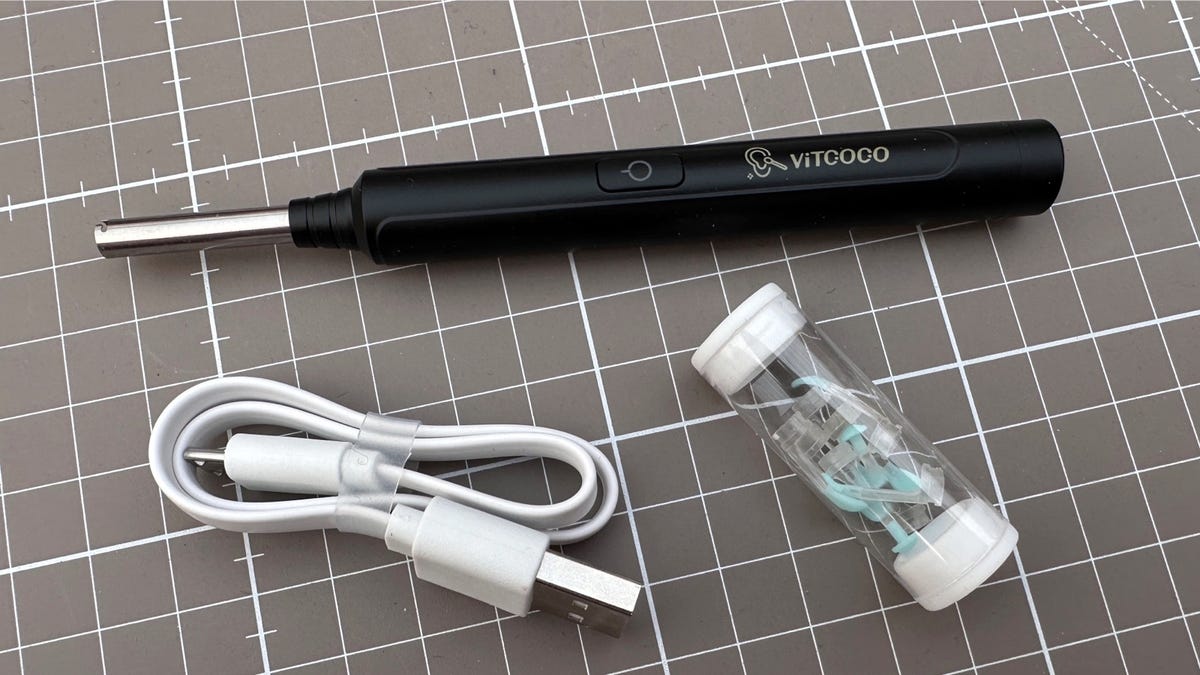Here’s why I have an earwax removal camera in my toolkit (and no, it’s not for my ears)
Isn’t tech wonderful!
So wonderful you can now buy a camera specifically designed to be stuck into your ear to help you remove earwax.
Yup. You read that right.
Also: This $10 plastic film lets me detect counterfeit objects
A tiny camera with a little silicone spoon on the end that connects via Wi-Fi to your smartphone, specifically designed to help you dig earwax out of your ear.
Now I have one in my toolbox.
Tech specs
- 1080P HD camera
- 360° wide-angle lens
- 6 LED lights
- IP67 waterproof camera
- 180-mAh rechargeable lithium battery
- Micro-USB port
- Wi-Fi connectivity
Now, before I start explaining, a word of caution.
I was once told by a doctor that I shouldn’t put anything smaller than my elbow in my ear, so I’m sure that the idea of shoving a camera into my ear would be frowned upon. Also, while those little scoops seem to fit onto the camera well, if one were to come off inside your ear, you’re going to find yourself with a doctor poking in your ear too.
Also: Best of CES 2023: Tech trends that’ll shape the future
I use this camera for a different purpose.
I’ve tested a number of these cameras, and they’re all pretty similar in terms of quality: a 1080P HD camera that’s surrounded by LED lights (these cannot be toned down, but in my experience they’re never bright enough to be problematic).
You need an app (which are all very basic), and to connect using Wi-Fi.
You can take stills and record video of what the camera sees using the app.
So why do I have one of these in my toolkit?
A tiny, IP67-rated waterproof camera. Adrian Kingsley-Hughes/ZDNET
Because these ear cameras make super handy, and cheap, borescopes. I know you can buy borescopes for smartphones, but I like the fact that this is Wi-Fi rather than a wired connection to the smartphone, and also the camera is a smaller diameter than the borescopes I have, meaning it can go places where my borescope can’t (just not inside ear canals).
It’s great for peering into devices, checking ports for damage, and inspecting mechanical items.
Inside a combination padlock. Adrian Kingsley-Hughes/ZDNET
Close look at an HDMI port. Adrian Kingsley-Hughes/ZDNET
As for the silicone scoops, I’ve attached tiny — and I do mean tiny — N42 neodymium magnets to some of mine. These magnets are only 2mm in diameter and 1mm thick, but despite the size can lift around 100 grams.
The addition of the magnet to the ear scoop makes this perfect for retrieving a lost fastener or tool.
NOTE: Neodymium magnets are extremely dangerous if swallowed or inhaled, so take care using these and keep them away from children or people who might not understand the dangers.
Tiny N42 neodymium magnet attached to the ear scoop. Adrian Kingsley-Hughes/ZDNET
Yes, these magnets are tiny! Adrian Kingsley-Hughes/ZDNET
For all the latest Technology News Click Here
For the latest news and updates, follow us on Google News.

